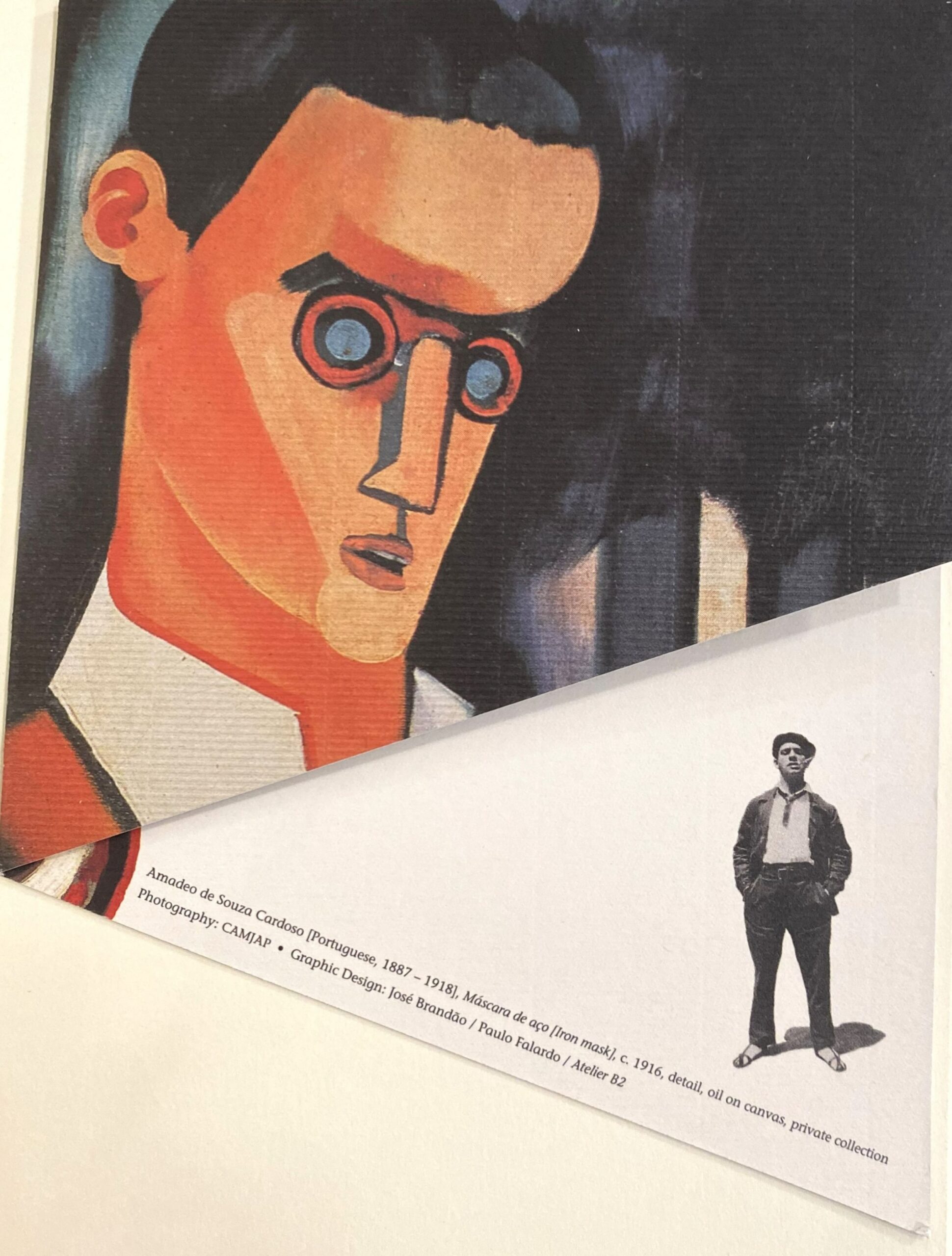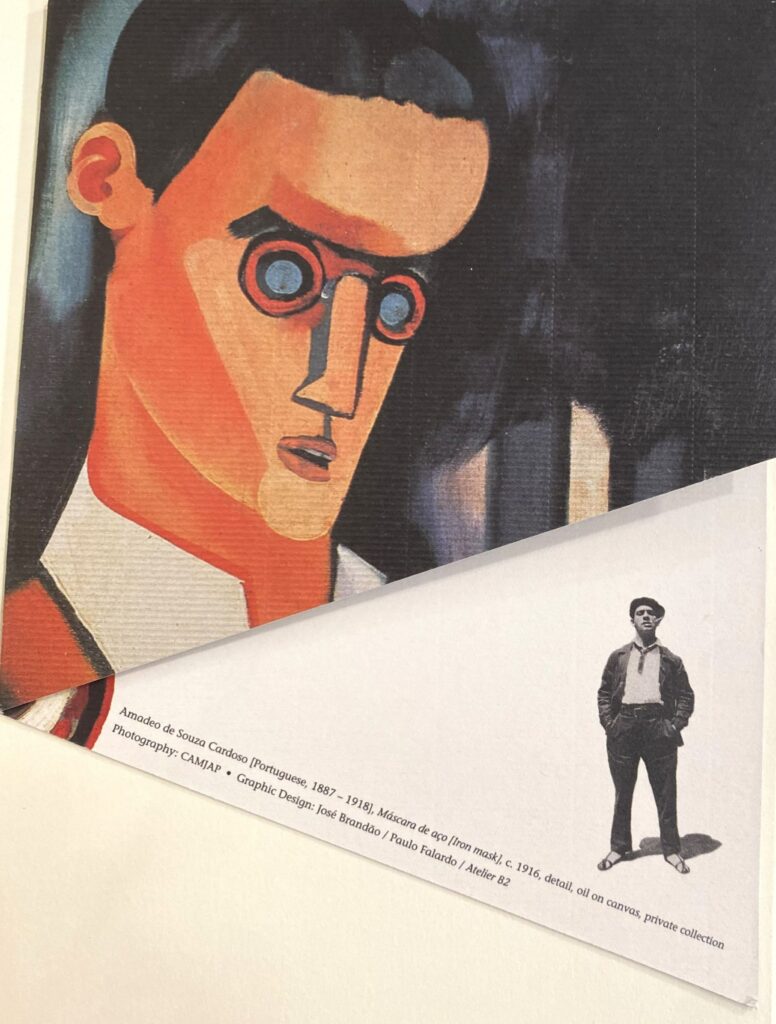At the Edge: A Portuguese Futurist—Amadeo de Souza Cardoso (1881–1917)


Past exhibition
At the Edge: A Portuguese Futurist—Amadeo de Souza Cardoso (1881–1917)
About the Exhibition
The Arts Club of Chicago will present an exhibition of paintings and drawings by Portuguese modernist artist Amadeo de Souza Cardoso (1887-1918) organized by the Corcoran Gallery of Art in Washington, D.C. with the Portuguese Ministry of Culture in Lisbon. Open to the public at The Arts Club on Friday, 21 January, the exhibition spans Souza Cardoso’s entire career and features paintings, works on paper, and archival material. At the Edge, previously on display at the Corcoran, is the first exhibition ever mounted in the United States devoted exclusively to the work of this influential artist. The exhibition will remain on view through 17 March 2000.
A national cultural hero in Portugal and a pioneer of modernism, Amadeo de Souza Cardoso enjoyed a promising but tragically brief career. He settled in Paris as a student in 1906, immersing himself in the bohemian culture of the city while becoming friends with Amadeo Modigliani, Juan Gris, Robert and Sonia Delaunay, Diego Rivera, and Constantin Brancusi. In the company of these artists, Souza Cardoso developed a personal style that combined exuberant and fanciful color with the newly invented forms of cubism and futurism. He also played with abstracted and fragmented forms in his paintings, often using more than one point of view in a single picture.
Throughout his career, Souza Cardoso maintained a strong connection to his native country, but he also incorporated into his art the avant-garde styles developing in Paris. In his highly imaginative and colorful work, he drew on both his Portuguese and Parisian experiences. He painted the mountainous landscapes of his native Marão in Montanhas (Mountains); the Catholic religious processions he witnessed near his home in Portugal in Procissão Corpus Christi (Corpus Christi Procession); abstract portraits of his friends such as Retrato de médico (Portrait of a Doctor) and still lifes that combined examples of Portuguese folk art with symbols of the Paris metropolis. With rhythmic, circular forms of floating color, Souza Cardoso also painted some of the earliest completely abstract pictures ever created such as Composição Abstracta—Étude B (Abstract Composition—Study B).
At the Edge: A Portuguese Futurist—Amadeo de Souza Cardoso is a traveling exhibition organized by the Gabinete das Relações Internacionais, Ministério da Cultura, Portugal and the Corcoran Gallery of Art, Washington, D.C.; in cooperation with the Fundação Calouste Gulbenkian, Centro de Arte Moderna José de Azeredo Perdigão [CAMJAP], Lisbon and the Museu Sousa Cardoso, Amarante; and the Embassy of Portugal, Washington, D.C. It was at the Corcoran from 11 September–28 November 1999.
A fully illustrated catalogue features essays by noted Portuguese experts, including Professor José-Augusto França of the Universidade Nova de Lisboa, as well as American scholars Dr. Kenneth Silver of New York University, Rosemary O’Neill of the Parsons School of Design, and Laura Coyle, assistant curator at the Corcoran Gallery of Art. These essays discuss Souza Cardoso’s biography, his stylistic development, the context of his years in Paris, his friendship with Robert and Sonia Delaunay, his relationship with Walter Pach, his participation with the Armory Show, and the interest of American collectors in his work.
About the Artist
Souza Cardoso was born on 14 November 1887 in Manhufe, Portugal. In 1905, he traveled to Lisbon to study architecture at the Academy of Fine Arts. On his 19th birthday, Souza Cardoso left Lisbon for Paris where he quickly abandoned his architectural studies and decided to become a painter. While in Paris, Souza Cardoso participated in several important exhibitions such as the Salon des Indépendents of 1911 and 1912 as well as the Salon d’Automne of 1912. He also exhibited works at the Herbstsalon in Berlin and the Salon in London. In 1913, American art impresario Walter Pach invited Souza Cardoso to present eight works at the most important exhibition of avant-garde art in America, the historic International Exhibition of Modern Art, better known as the Armory Show. The exhibition opened in New York City and then traveled to Chicago and Boston. Souza Cardoso sold six of his eight works to several notable American collectors.
Souza Cardoso was living in Paris but visiting his family in Portugal when the First World War broke out. Stranded by the war, he continued to paint and created some of his most complex and original works, such as Pintura (Coty) (Painting (Coty)), a striking work that refers to the French perfume and combines the image of a female nude with bits of broken mirror, sand and hair pins.